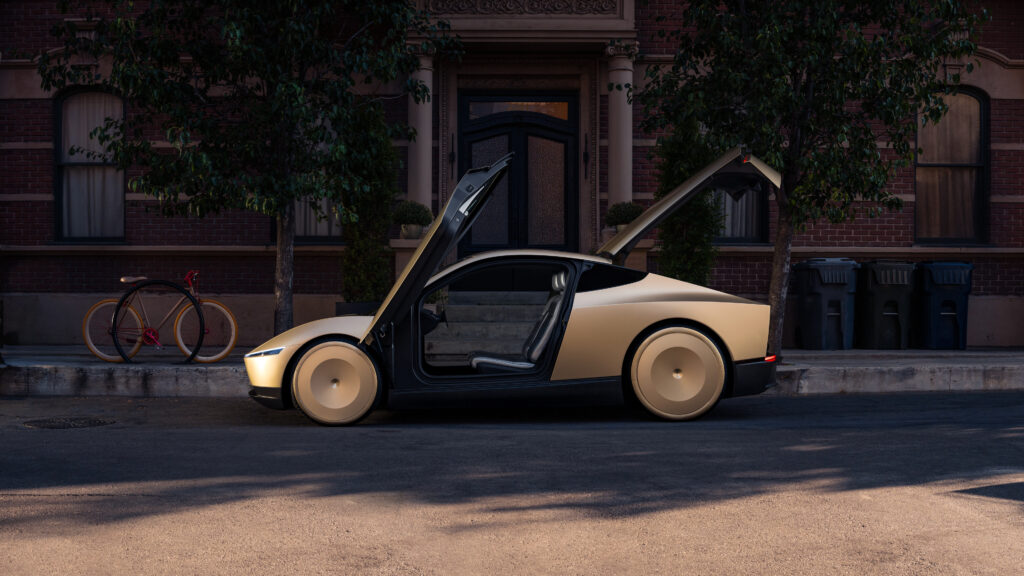Tesla has made headlines in the development of autonomous vehicles, with the unveiling of its latest innovation—the Cybercab.
Introduced by Elon Musk, CEO during the “We, Robot” event at Warner Bros. Studios, the Cybercab is designed as a fully autonomous electric vehicle. It was also referred to as the Robotaxi at various points during the event and was showcased in a dramatic display as it autonomously drove Musk through mock-up streets before arriving on stage. This futuristic vehicle, equipped with butterfly wing doors, is distinct in that it lacks both a steering wheel and pedals, underscoring its autonomous nature.
The Cybercab isn’t meant to be driven by humans, furthering Musk’s vision of a vehicle that eliminates the need for drivers.

Inside the Cybercab, passengers are greeted by a spacious lounge-like setting, with a large display similar to those found in Tesla’s current models. The vehicle, built for comfort and ease, provides an environment where passengers can relax while the car takes control. Tesla’s Cybercab also embraces cutting-edge technology, utilizing wireless induction for charging rather than a traditional charging plug, although specific details about the battery capacity and charging speed were not disclosed.

During the event, Musk highlighted several problems the Cybercab aims to address, such as traffic congestion, high transportation costs, and safety concerns. He noted that if most vehicles were autonomous, driving would become “ten times safer” and less costly. Additionally, owners of Cybercabs could potentially profit from their vehicles by offering them as robotaxis while they aren’t using them, essentially turning cars into income-generating assets.

The proposed price for a Cybercab is around $30,000 in the US, according to Musk. This aligns with Tesla’s long-standing goal of making autonomous driving accessible and affordable

However, the timeline for seeing Cybercabs on the streets remains uncertain. Musk revealed that fully autonomous driving would first be introduced in Texas and California by 2025 with Tesla’s Model 3 and Model Y. Production of the Cybercab is projected to start in 2026, although Musk, in his characteristic fashion, acknowledged that he tends to be “a little optimistic with timeframes” and hinted that production might be pushed to “before 2027.”

Musk also stressed that regulatory approval remains a significant obstacle, both in the U.S. and globally, before unsupervised autonomous driving can become a reality. Despite Tesla’s ongoing development of its Full Self-Driving (FSD) package, which has been in progress for nearly a decade, it is still unclear when this technology will be deemed ready for widespread use.
Imaged by Tesla

